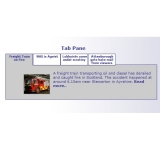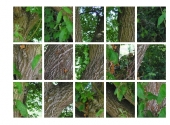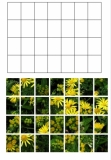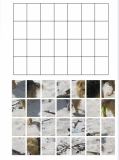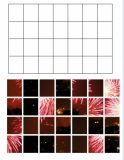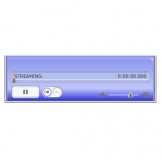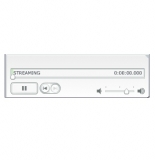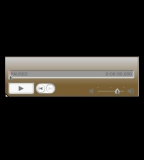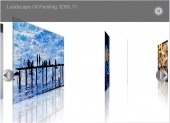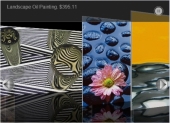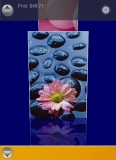|
Articles -
Articles
|
|
Written by Spiral Scripts
|
|
Wednesday, 01 December 2010 11:14 |
|
Google offers a variety of online facilities in addition to its general search functions. If you are selling products online, one facility that you should definitely be be aware of is the Google Merchant Center. This is a tool which allows you to upload your product listings to be used in Google Product Search, Google Product Ads, and Google Commerce Search. So what are these, and why might you want to use them?
Google Product Search
Google Product Search is a service designed to helper users locate products online, currently available for the following countries: USA, UK, France, Germany and Japan. Listing is free to merchants, you just need to upload the product information to Google. Shoppers can access by clicking on the 'Shopping' link on Google's front page, it is the e-commerce equivalent of Google's website search results. Since the only cost is the time it takes to submit your products, there is little downside to using this service, and a strong reason to do so, since it provide an additional way for potential customers to find your products.
|
|
Read more... [Google Merchant Center - How It Can Work For You]
|
|
|
Articles -
Articles
|
|
Written by Spiral Scripts
|
|
Thursday, 24 June 2010 11:10 |
|
Our featured items range of modules are designed to give you the flexibility that you need in displaying Joomla articles.
They allow you to display selected Joomla articles in a variety of formats, including tab panes, accordions, carousels and slideshows. The modules are designed to allow you the greatest possible flexibility in the way you select your Joomla articles, either selecting from one or more categories or sections, or displaying your chosen list of articles. These articles can be displayed in a variety of orderings, and you can choose the exact amount of text to display, ranging from a short extract to the entire article text. You also control whether or not to display a thumbnail, and the thumbnail size.
The modules also have a number of other useful features, including the ability to dynamically resize and cache images, and to trigger content plugins. As well as displaying content from the Joomla Core Content component, the modules can display articles from Mighty Extensions Resources, and we plan to support additional CCKs in the future.
Featured Items Suite

As a special offer you can buy the complete suite in a single pack for a bargain price of £35.00. For this you get: mod featured items, mod featured items pro, mod featured items carousel, mod featured items slideshow and mod newstab. Plus as a bonus you get two of our other Joomla extensions, com jigsaw (a Flash puzzle game for Joomla) and mod random mp3 (an mp3 player module).
|
|
Read more... [Our Featured Items Range]
|
|
Articles -
Articles
|
|
Written by Spiral Scripts
|
|
Monday, 08 March 2010 11:19 |
|
It is often the case that as web developers we need to add some extra coding that will deal with the quirks of particular web browsers . Using Joomla we can take advantage of Joomla's built in browser detection.
Browser detection is handled through the JBrowser class. The is located in Joomla's class library, in the environment subpackage. In order to use it you will first need to import it:-
jimport('joomla.environment.browser');
Then you need to get an instance of the browser object
$browser = &JBrowser::getInstance();
You can then find information about the web browser being used through examing the properties of this object, which are accessed through the appropriate 'get' method. The methods include:-
- getPlatform: returns the browser platform ('win','mac' or 'unix');
- getBrowser: returns the browser type ('opera','palm','msie', 'amaya', 'fresco', 'avantgo', 'konqueror', 'mozilla', 'lynx', 'links', 'hotjava', 'up','xiino', 'palmscape', 'nokia', 'ericsson', 'wap', 'imode', 'blackberry', 'motorola', 'mml');
- getMajor: returns the major version number;
- getMinor: returns the minor version number.
To give an example, a very common application is that you wish to load a separate stylesheet for users of Internet Explorer 6, to deal with its annoying quirks.
Example
jimport('joomla.environment.browser');
$doc =& JFactory::getDocument();
$browser = &JBrowser::getInstance();
$browserType = $browser->getBrowser();
$browserVersion = $browser->getMajor();
if(($browserType == 'msie') && ($browserVersion < 7))
{
$doc->addStyleSheet( 'css/ie6.css' );
}
If there is a particular quirk that you wish to deal with, such as lack of support for alpha transparency in png images (a common complaint with IE6), you can use the getQuirks() method:-
If($browser->getQuirks('png_transparency'))
{
$doc->addScript( 'js/pngfix.js' );
}
Other useful methods are:-
- isRobot(): returns true if the user agent is in fact a robot;
- isSSLConnection(): returns true if the connection is SSL.
- hasFeature('feature'): returns true if the browser supports the feature 'feature', which can include among others ('iframes', 'frames', 'javascript','java', 'images', 'dom, 'svg'')
Limitations
The browser object uses the reported user agent to detect this information, this information is under the control of the client so there is no guarantee that it is true. In particular you need to be careful using the hasFeature() method. For example the reported value for hasFeature('javascript') does not take account of the fact that users can choose to disable scripting on a browser that will support javascript. |
|
Articles -
Articles
|
|
Written by Spiral Scripts
|
|
Monday, 18 January 2010 18:06 |
|
When editing a Joomla! template one of the biggest challenges can be finding the css style rules that apply to a particular element. It really helps if you understand the basics of css selectors, and how they are applied to css style rules.
|
|
Read more... [Understanding CSS Selectors When Editing Joomla Templates]
|
|
Articles -
Articles
|
|
Written by Spiral Scripts
|
|
Saturday, 16 January 2010 11:34 |
|
Our Random MP3 player can display artist and song information about the mp3 file that it is playing. It does this by reading the ID3 tags from the file. ID3 tags are data fields that are added to an MP3 file. ID3 tags contain information about the file, such as the name of a song, album, and artist.
Sometimes there are difficulties with this, usually due to the fact that there are a variety of formats for these tags. The player supports version 1.0, 1.1, 2.3, and 2.4 tags; version 2.2 tags are not supported.
If your player is having problems displaying the information then it may be because the ID3 tags for your mp3s are the wrong version for it. It is in fact quite easy to change the version if you have iTunes. To convert the tags, first open iTunes, then find the mp3 track file. Right-click on the track, and select 'Convert ID3 tags', you will then be prompted to select the tag version. |
|
|

 Subscribe to Feed for this Page
Subscribe to Feed for this Page 









